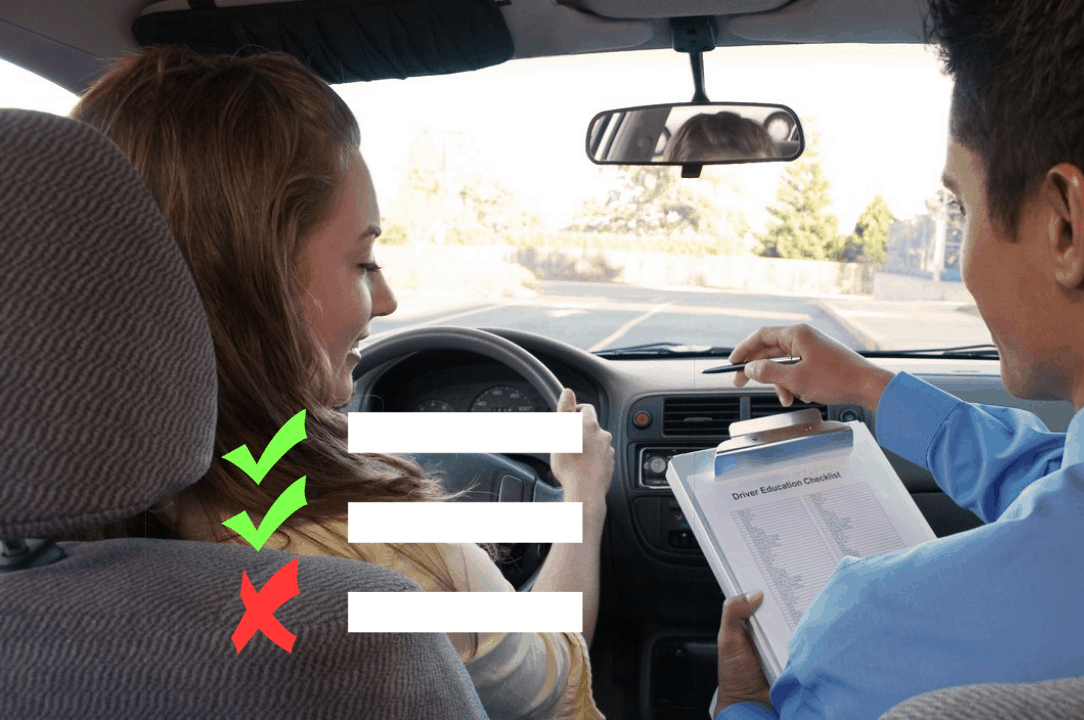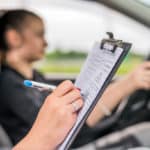You’ve been studying and practicing for driving test, and now the big day is here. You are already nervous enough; is there anything you forgot to do? Something you should have brought with you? Or Checking driving test Checklist?
Here is a list of fifteen important things on your checklist you need to know before the driving test to ensure you pass with flying colors:
1. A reliable car in good working order
The car you use for the driving test should ideally be the car you’ve been practicing driving in; it’s familiar to you, and you are comfortable in it. The vehicle must not have any warning lights on, all signals and lights must be in good working order, and the seatbelts must be functional. Tires should be inflated and fluids, like gasoline, topped off. Also, the handbrake must be functional and all doors accessible and in working order. Many states offer a detailed driving test checklist for car requirements on testing vehicles.
2. Proof of insurance
You will need to provide evidence that you have insurance when driving for the test, just in case.
3. Proof of successful completion of a driver’s course, if required
Know your state’s requirements for driver’s education courses. Make sure you have your certificate ready if it’s required before the driving test.
4. Your learner’s permit
Make sure you have your valid learner’s permit, and any other documentation your state will require to prove you have put in the required practice before your test. This is one of the most important documents to add to your driving test checklist.
5. Bring a licensed adult
You will need to be accompanied by a parent or guardian, 21 years or older, for your test. You aren’t permitted to bring anyone in the car with you for testing including siblings, friends, children, or pets; make sure if you have anyone with you that someone is available to care for them while you are taking the test. Driving yourself to your driver’s test, without an adult in the vehicle, can mean an automatic failure and an inability to test again for months. Your driving instructor is an accepted guardian for testing purposes.
6. Proof that your car is legal in the state
Inspection stickers and registration must be up to date, and your tags must be completely in compliance and up to date. Many times, cars that are registered out of state are not permitted for use in the driver’s test. Again, look at your individual state for their vehicle driving test checklist regarding requirements.
7. Be prepared for any testing fees
Make sure you are aware of all fees for testing and have cash, check, money order or credit card (check to see what forms of payment are authorized) ready at the time of your test.
8. Make sure you are on time
Be ready at the checkpoint on time, if not at least fifteen minutes early. This gives you time to review your driving test checklist and make sure you have all the necessary documentation prior to taking the test.
9. Clean the car’s interior
Make sure to secure all loose objects, so they do not slide around during your test or become airborne in case of a sudden stop.
10. Wear real shoes
Wear sneakers or other footwear that completely encases your foot. Sandals or flip flops aren’t acceptable footwear for your driving test. Ladies, leave your high heels at home on the day of your test.
11. Check your phone at the door
If you have to have your phone with you, silence it completely and store it in the glove compartment. Never leave the phone in reach while you are testing and more importantly, never play with it, check your messages, text or talk on it while testing.
12. Bring your confirmation of appointment letter with you
When you scheduled your appointment, you should have received a physical letter or an email confirmation of the date. Bring this with you, as it may contain other numbers your test administrator will need to identify you before your test.
13. Prepare by driving the test routes
You will get a feel for the route your driving test will include by driving the neighborhood surrounding the testing facility. Practice in these neighborhoods, paying attention to stop signs, lights, and other signs.
14. Practice right before the test
If at all possible, try to schedule a practice session right before your test so you can “warm up,” so to speak, and be more relaxed at the time of your test.
15. Pay attention to what your evaluator is saying, but not what he is doing
He may be busy scratching, writing and checking on his clipboard, but don’t pay attention to it. Listen to his instructions and don’t be distracted by his actions. You are allowed many “small errors” during your test, especially if they are self-limited and not dangerous to yourself or other drivers.
Passing your Driver Test: A Few Things your Evaluator is Looking For
Getting ready for your test may seem nerve-wracking, but it doesn’t have to be. On top of your driving test checklist, if you can show that you are a driver who is situationally aware, you will go a long way towards passing your test. Here are a few examples of things your driving test evaluator is looking for:
- Seat belt use
- Compete for stops at signs and lights
- Using your mirrors properly and often
- Starts stops and turns that are smooth
- Staying centered in your lane
- Picking up on clues around you, like construction signs and changes of speeds
- Obeying the speed limit and not speeding or going too slowly
- Drive according to the road conditions with wiper and headlight use if it is raining
- Keep both hands on the wheel
- Do not become distracted by the radio or, even worse, your cell phone
Remember that your test assessor isn’t out to fail you deliberately and is open to communication as you test. If you are relaxed, confident and prepared with this driving test checklist, you should be able to pass your test the first time around.



